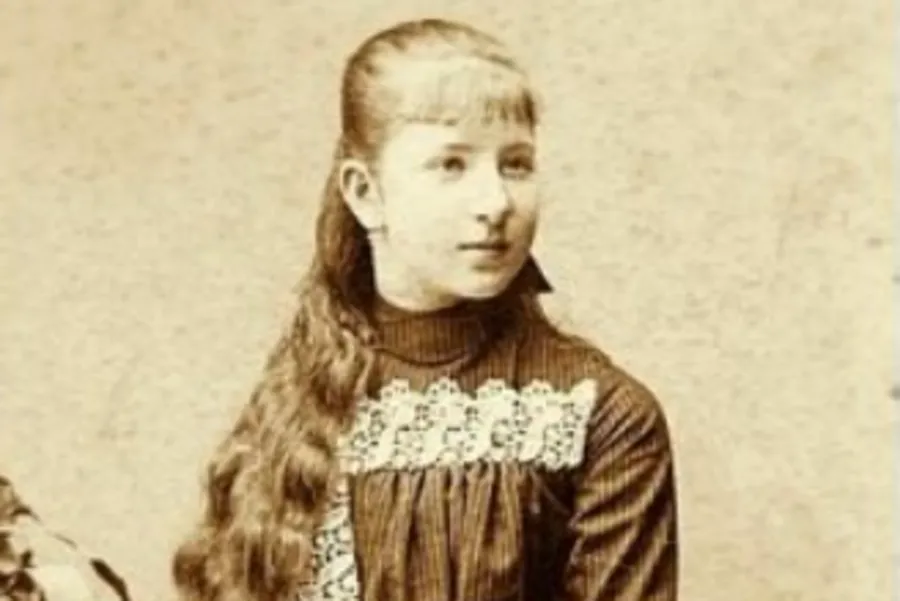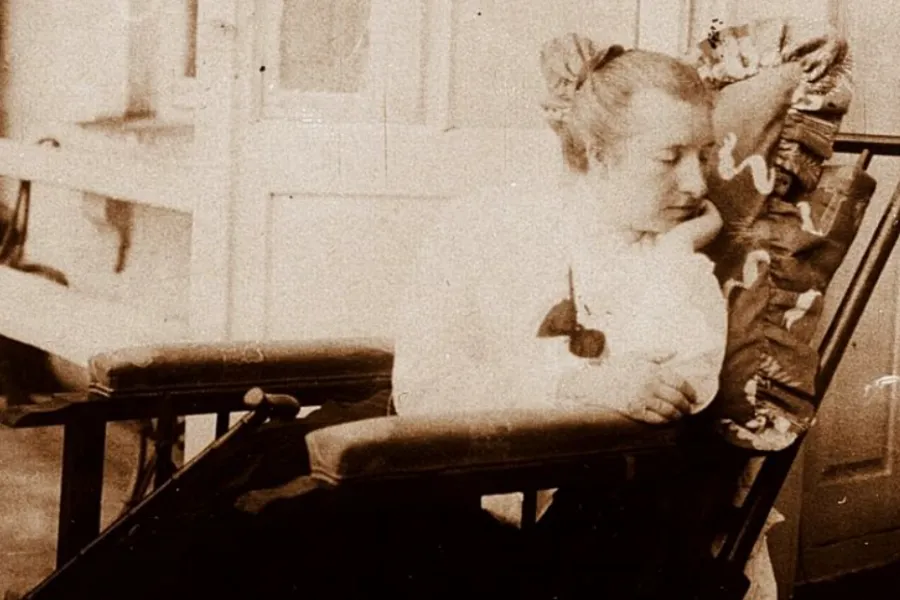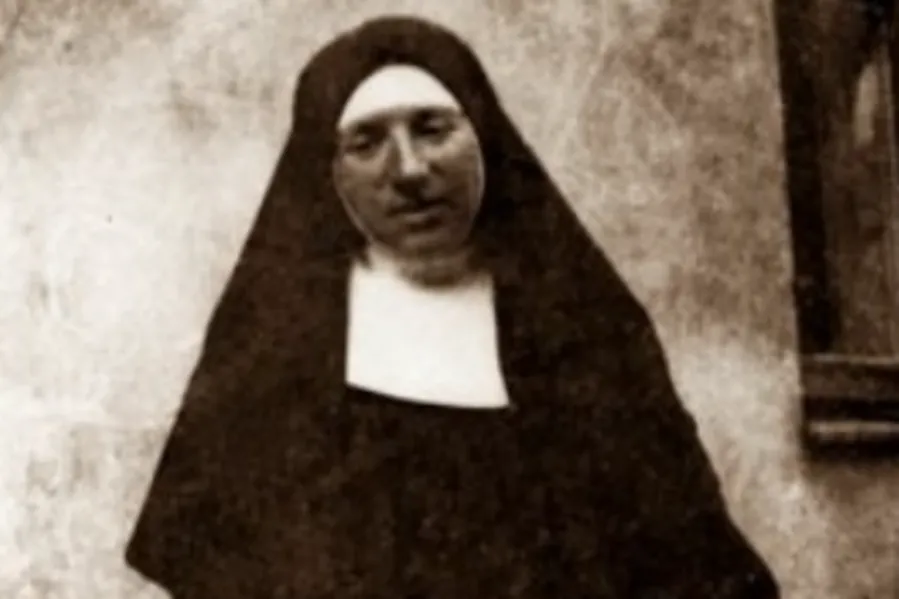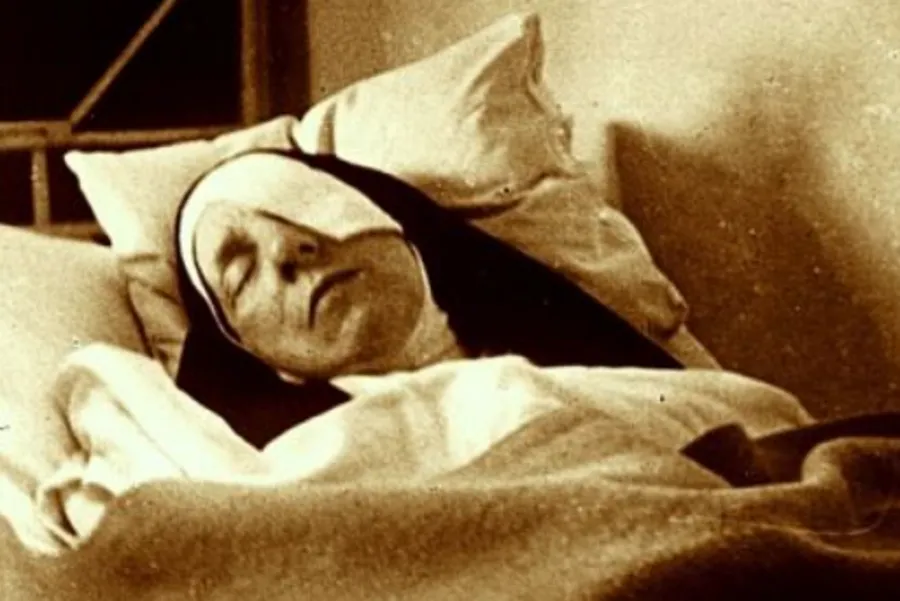
Warsaw, Poland, Jul 15, 2021 / 03:40 am (CNA).
Cardinal Stefan Wyszyński, a giant of 20th-century Catholicism, will be beatified on Sept. 12.
But the Primate of Poland who heroically resisted communism is not the only figure who will be raised to the altars that day in Warsaw.
Wyszyński will be beatified alongside a nun who is little known outside her native Poland: Mother Elżbieta Róża Czacka.
How did Czacka, who died in 1961 after a lifetime of quiet service to blind people, come to share a beatification ceremony with Poland’s “Primate of the Millennium”?
To answer that question, CNA spoke with Sr. Angelica Jose, F.S.C., whose life was deeply influenced by the woman known to Poles as Matka Czacka (Mother Czacka).
As a student, she came across a brochure produced by the religious congregation Czacka founded and was touched by a photo of Czacka with a blind boy.
“Being fascinated by the charism of the congregation — service for the physically and spiritually blind — I stopped my studies at Poznań University of Life Sciences and entered the congregation,” Sr. Angelica Jose recalled.
She continued: “What delights me about Mother Czacka is her tremendous passion for life for God — in service of the blind. Her courage in accepting suffering and realism in life. And her trust in God’s Providence.”
Róża Czacka was born on Oct. 22, 1876, in Bila Tserkva, a city once located in the Crown of the Kingdom of Poland and known as Biała Cerkiew but situated today in central Ukraine.
The sixth of seven children, she moved with her aristocratic family to Warsaw, where the young countess learned to play the piano, ride horses, and speak English, German, and French.
Throughout her childhood, she suffered from eye problems. At the age of 22, she returned to the family’s estate in Ukraine for a summer vacation. While horse riding, she fell and was blinded. Her relatives struggled to accept her condition.

Czacka dedicated herself to learning Braille, as well as traveling across Europe seeking greater knowledge about blindness. She dreamed of founding an organization that would help blind people not only to integrate into the wider community but also to serve as apostles among sighted people.
In 1911, she founded the Society for the Care of the Blind. Sr. Angelica Jose said that Czacka adapted Braille to the Polish language, developed a system for educating blind people, and sought to inform the general public about blindness through articles and radio broadcasts.
“Róża Czacka was an extremely rich personality,” she commented. “When looking at her, one should see a blind woman of deep faith, courage, and simplicity. This is the inner dimension of her.”

“On the other hand, it is necessary to notice her phenomenon in the development of typhlology [the scientific study of blindness] in contemporary Poland: taking care of the blind, their education and inclusion in social life.”
“Mother Elisabeth Róża Czacka was a woman extremely devoted to God and a pioneer in matters of the blind in Poland. So let’s look at her from these two perspectives.”
In 1915, Czacka went to Ukraine for a two-week stay with her brother Stanisław. She ended up spending three years there because the First World War made it impossible for her to return to Warsaw. She spent the time in prayer and reflection.
Drawn to the Third Order of St. Francis, she assumed the Franciscan habit and took the religious name Elżbieta (Elisabeth), making her perpetual vows on Aug. 15, 1917.

The following year, she went back to Warsaw, where she founded the Congregation of Franciscan Sisters Servants of the Cross. The new religious congregation had three aims: caring for the physically blind, serving the spiritually blind, and making expiation for the spiritual blindness of the world.
In 1922, the sisters were given a small plot of land in Laski, a village about 10 miles west of Warsaw.
With a priest named Fr. Władysław Korniłowicz, Czacka founded a project named Triuno. The name referred not only to the Holy Trinity, but also to the unity among the three groups of people collaborating in Laski — the blind, sisters, and lay people — as well as the work’s three goals: educational, apostolic, and charitable.
Laski’s fame grew as a center of a new spirituality combining Franciscan, Dominican, and Benedictine elements, Sr. Angelica Jose explained. The community was noted for its simplicity, its devotion to the teaching of St. Thomas Aquinas, and its love of liturgy.
A young priest called Fr. Stefan Wyszyński visited Laski in 1926, spending a few weeks in the village at Korniłowicz’s invitation. Wyszyński had first encountered the priest years earlier, when Korniłowicz gave lectures on the liturgy at Wyszyński’s seminary in Włocławek.
The future Polish primate met with Czacka and became heavily involved with the work at Laski. He helped to build a retreat house, organize a “Week of the Blind” in 1936, and fundraise for the Society for the Care of the Blind.
Wyszyński also gave lectures on social science, law, and Church history for the blind, the sisters, and lay employees. He worked with Czacka on the congregation’s constitutions.
When Nazi Germans invaded Poland in 1939, Czacka suffered a head injury during the bombing of Warsaw that resulted in her losing an eye.
During the Warsaw Uprising in 1944, Czacka and Wyszyński helped to organize a field hospital for the wounded in Laski.
Serving as a chaplain to the Home Army, Poland’s underground resistance movement, Wyszyński helped to spiritually strengthen the combatants through the sacraments.
Sr. Angelica Jose said that the deep bond forged between the priest and the sister is revealed in a collection of 65 letters exchanged between 1938 and 1952.
She described the correspondence, published in 2006, as “lively, warm, and full of mutual concern and care for others.”
After the war, Wyszyński was named archbishop of Gniezno and Warsaw, receiving the title of Primate of Poland.
Czacka continued to pursue her mission, but her health deteriorated throughout the 1950s.

Wyszyński’s life did not become any easier, either. In 1953, he was placed under house arrest by Poland’s communist authorities. After he was released three years later, he defended the Church unflinchingly against communist oppression.
“Until the end of Mother’s life, Cardinal Stefan Wyszyński surrounded her with care and love, and was a special help for Mother Elisabeth, especially in the last days of her life,” Sr. Angelica Jose said.
“He visited Mother Czacka for the last time several hours before her death — which took place on May 15, 1961 — and presided over the funeral Mass on May 19, 1961.”
A striking photograph shows Wyszyński standing in prayer beside the headstone of Czacka’s grave in Laski.
In a homily on Holy Saturday 1963, Wyszyński recalled his friendship with Czacka and Korniłowicz.
He said: “I never pray for Mother Czacka, I only pray to her, and I never pray for Father Korniłowicz — I pray to the Father … it helps immensely. So remember, both of them are surely in the glory of the Almighty Father.”
If you value the news and views Catholic World Report provides, please consider donating to support our efforts. Your contribution will help us continue to make CWR available to all readers worldwide for free, without a subscription. Thank you for your generosity!
Click here for more information on donating to CWR. Click here to sign up for our newsletter.







In articles like these, I always find it amazing how some people can give their life to the service of God. As one of the first parts of our catechism we learn the admonition to “Know, Love and Serve God!” Unfortunately for too many it is a saying with no real meaning or understanding. Mother Czacka is an example of what it really means to “Know, Love and Serve God!”. Thank you for this article.
A woman of amazing compassion and drive, who could easily have given in to her disability and allowed money and position to carry her through life. Instead, she devoted her life to others similarly challenged but without the safety that she had. Thank you for this article. Yet another saint to add to my collection of admired children of God.